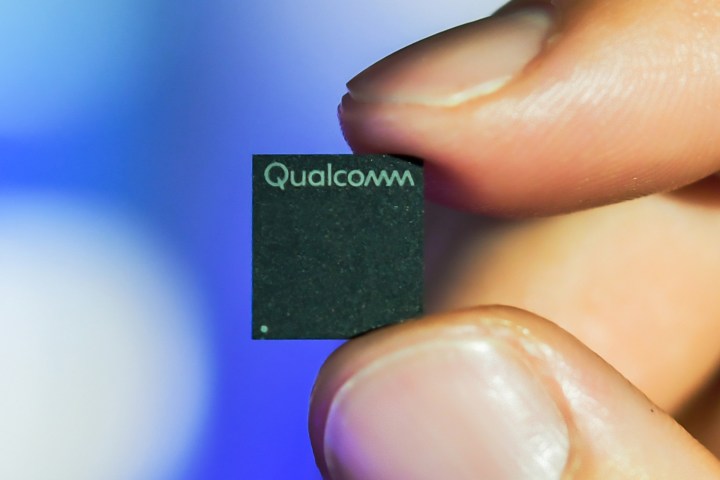
Qualcomm’s assault on the classic Intel/AMD paradigm of modern computing has some new ammunition in the form of additional Snapdragon system on chips (S0C). Joining the previously announced Snapdragon 8cx, are the new Snapdragon 7c and 8c, which aren’t quite as powerful, but exhibit lower power and thermal requirements, so should provide a broader selection of options for those considering laptops based around Qualcomm mobile hardware in the future.
Always Connected PCs have, in the past few years, become a small, but growing niche of mobile computing that looks to emulate the way in which smartphones are used. They extol certain features such as long battery life, fast charging, fast startup and quick-recovery times, and both cellular and Wi-Fi data connections. Although Intel has been a major player in this space, Qualcomm has always used it as an inroad for its traditionally mobile-targeted hardware, specifically its Snapdragon SoCs. Laptops fitted with Snapdragon 835 and 850 SoCs received mixed reviews, but with its new 7c, 8c, and 8cx Snapdragon compute parts, Qualcomm hopes to change that.

“Qualcomm Technologies’ innovation in smartphones and connectivity placed the power of your desktop PC in your phone, now the phone is returning the favor by bringing thin, light, always-on, always-connected, all-day battery life experiences to your PC,” said Alex Katouzian, senior vice president of mobile at Qualcomm Technologies. “The mobile-first consumer wants an experience on par with a smartphone, and we have the innovation, the inventions and the technology to enable this experience for customers across price points.”
A key component of this new lineup is its relative breadth. With three products to offer laptop partners, Qualcomm hopes that manufacturers will, in turn, offer a broad selection of devices to potential buyers, giving them the option of additional power, or extended battery life, without needing to sacrifice always-on connectivity and performance.
We don’t have any kind of real-world performance results just yet, certainly not from any third parties, but that’s to be expected. Qualcomm’s announcement of these new SoCs is an invitation for laptop manufacturers to begin designing new devices around the hardware, so we aren’t likely to see any laptops sporting these new chips until well into 2020 at the earliest.
That said, Qualcomm has released some specifications and rough estimations of performance. The Snapdragon 7c is said to be based on an octa-core Kryo 468 CPU. That’s a new CPU that, by the numbers at least, should fit somewhere in performance between the Snapdragon 855 and 8cx. Graphically, though, it may be significantly weaker than either, as it sports an Adreno 618 GPU, which was previously used in the Snapdragon 730. That may mean this is a poor chip even for entry-level gaming, though Qualcomm suggests that overall the Snapdragon 7c is roughly 20% more capable than the “competition” (Intel Core i3, perhaps?) and offers up to twice the battery life.
The 8c is said to be built on an advanced 7nm process node and enjoys added performance because of it. Although Qualcomm announced that the 8c was 30% faster than a Snapdragon 850, it didn’t detail what CPU or GPU it has on board. It did claim, however, that it had a “powerful GPU,” that would give it impressive graphical capabilities. Power draw and thermal demands should remain low, though, as it’s said to be able to operate in an entirely fan-less design.
Both SoCs enjoy high-speed cellular data connectivity too, thanks to the built-in Snapdragon LTE modems, with the 7c sporting an X15, and the 8c an X24. The latter enjoys multi-gigabit connectivity, so it should offer more than enough mobile bandwidth for just about anyone for years to come.
For business customers, Qualcomm detailed a more advanced Snapdragon 8cx as part of its Enterprise Compute Platform, which will find its way into workstation laptops in the near future. Also based on a 7nm process node, this 8cx will enjoy greater security software support, and the integration of a secure core. Qualcomm didn’t go into detail about how that might work, but it seems likely that it will be implemented in a similar manner to the Secured Core system in Microsoft’s Surface Pro X, which is itself powered by Qualcomm hardware.
All three chips also enjoy support for Qualcomm’s new A.I. engine too, which we’re told will help accelerate machine learning tasks and applications.
It’s still early days for these chips, and we’ll need to see how they perform in the wild before passing a verdict. But more competition in the already-competitive laptop space just means more choice for prospective buyers and new options with longer battery life, enhanced A.I. support, and a full-fat Windows ecosystem on top of them, will surely find their niche.
Editors' Recommendations
- Playing PC games on a Snapdragon X Elite laptop made me a believer
- Meet the Snapdragon 8 Gen 1, Qualcomm’s flagship mobile chip for 2022
- Qualcomm Snapdragon 8cx vs. Intel Core i5
- Snapdragon 8cx Gen 2: Qualcomm’s second attempt at outmuscling Intel on PCs
- The Qualcomm Snapdragon 865 offers improved A.I. performance and 8K video




